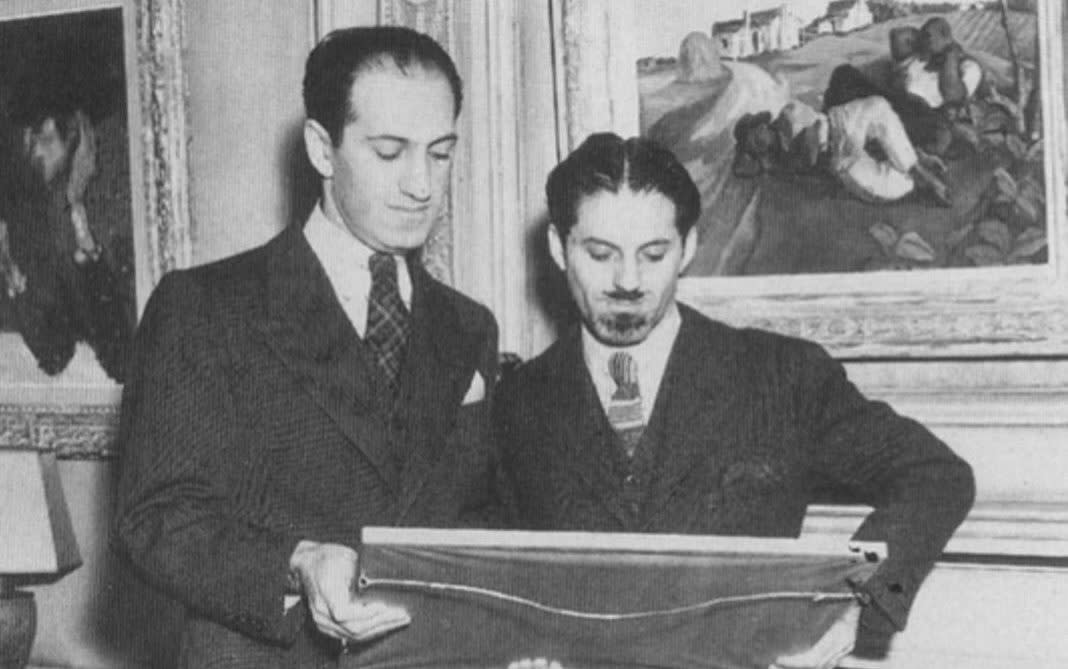George Gershwin was one of the greatest art collectors of the 1930s, book reveals

- Oops!Something went wrong.Please try again later.
- Oops!Something went wrong.Please try again later.
George Gershwin, the celebrated US composer, has been revealed as one of the greatest art collectors of his time.
He is known for 20th century masterpieces such as An American in Paris and Rhapsody in Blue.
But his passion for collecting contemporary art has now been uncovered in previously unpublished letters written in the 1930s.
Gershwin, who died in 1937, wrote letters to his cousin, an artist, who was in Paris seeking possible art purchases for him.
He wrote of wanting “only masterpieces” by artists such as Modigliani and Gauguin, saying that if “those are not available… I would rather pay a little more money for a good work of a master than a little less for a good work of a second-rater”.
In another letter, he wrote: “It was very interesting to me to note the prices of the various items… For instance, the small Renoir called the Guitariste for fourteen thousand francs. It seems like a very good buy to me. Isn’t that very cheap for a Renoir, or is the picture just a poor example of his work?”
While Gershwin found fame at a young age and was wealthy when the world was experiencing the Great Depression, he observed in another letter: “Money is very scarce during these depressing times and one must be 10 times as careful of what he spends.”
Responses from his cousin, Henry Botkin, have also been unearthed. “Nobody is more anxious and interested in seeing you build a collection that would eventually rate as one of the finest,” Botkin told Gershwin.
“I assure you with your knowledge and enthusiasm and real proven love for painting this could be accomplished.”

Gershwin, whose other famous works include I Got Rhythm and Porgy and Bess, died aged 38 after failed brain surgery.
The letters will be published for the first time in a forthcoming book, George Gershwin and Modern Art: A Rhapsody in Blue, from Scala Arts Publishers. Its author, Dr Olivia Mattis, discovered them in a US archive.
She said: “There have been many books on Gershwin, some of which mention that he collected paintings. There might be an artist that gets mentioned, but nothing more. I started to get really curious.”
During 20 years of research, she identified his entire collection, showing that it was one of the most significant of his day. There were works by Modigliani, Kandinsky and Picasso, including the latter’s The Absinthe Drinker, 1901, now in a private collection.
Dr Mattis said: “This painting from Picasso’s blue period was the crown jewel of Gershwin’s collection.”
In his letters, Gershwin wrote of various paintings, including Utrillo’s The Suburbs. Noting that it was painted with a particularly “vigorous brush”, he added: “It is a very luminous picture. It seems to throw out its own light. I am crazy about it, and it fits in perfectly in my living room.”
Dr Mattis began to notice that Gershwin had cultivated his own image in photographs. “He was choosing to pose in front of various works of art,” she said. “It intrigued me that there was always something behind him that was a painting.”
The pose of a figure in a Chagall painting that Gershwin hung in front of his piano mirrored his own pose in a photograph of himself alongside songwriter Irving Berlin.
The Chagall is an untitled 1930s painting of an old man with beard, now in the Jewish Museum, New York. It was acquired by Botkin in response to the composer’s request for “one of the Rabbi pictures… by this mystic painter”.
‘Whole visual practice’
The letters reveal that he was very specific about what he collected. Gershwin was also an amateur painter, draughtsman and photographer, Dr Mattis said, revealing a “whole visual practice that nobody knows about”.
He wrote to his cousin: “What a great advantage painting has over composing!… When I finish a canvas it’s there. That’s the end. But a composition… after writing it, I have to assemble 60 musicians, and make arrangements of the music before I can hear the results of my efforts.”
Dr Mattis has co-curated the first major museum exhibition devoted to the composer’s art, opening this month at the Baker Museum in Florida. It is among worldwide celebrations marking the 100th anniversary of Rhapsody in Blue, including a performance at Cadogan Hall in London.
While the bulk of Gershwin’s art collection was widely dispersed, many pieces remain within the family. The exhibition, which opens at Artis—Naples, The Baker Museum in Naples, Florida, will feature loans from international museums and private collections, including those of his descendants.
The exhibits will include Modigliani’s Portrait of Doctor Devaraigne, 1917. There will also be paintings, drawings and photographs that Gershwin himself created and an original Rhapsody in Blue manuscript, loaned from the Library of Congress.

